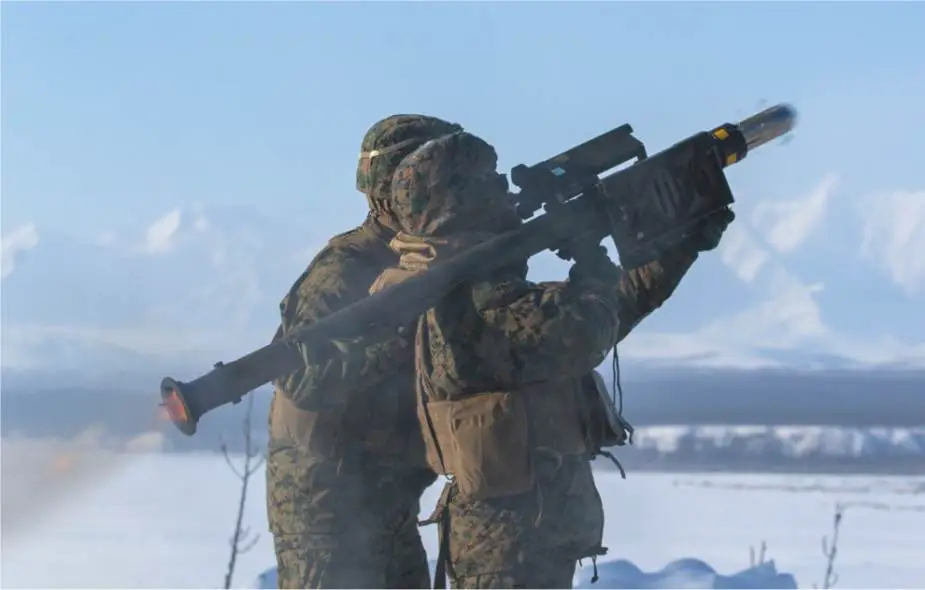Breaking news
US launches RFI Request For Information to replace Stinger MANPADS missile system.
According to RFI (Request For Information) published by the U.S. government on November 10, 2020, the United States Government is conducting research to identify potential interested sources with the capability to provide a Man-Portable Air Defense System (MANPADS) to meet the increasing demand to counter the growing aerial threat capability and to replace the FIM-92 Stinger which is in service with the U.S. Army since 1981.
Follow Army Recognition on Google News at this link

Lance Cpl. Kyle H. Almskog (right), a low altitude air defense gunner, and Marine Cpl. Austin J. Cable, a section leader both with 2nd Low Altitude Air Defense Battalion, Marine Air Control Group 28, fire an FIM-92 Stinger missile during U.S. Northern Command exercise Arctic Edge 20 in Fort Greely, Alaska, March 4, 2020. (Picture source U.S. DoD)
The Stinger- Reprogrammable Microprocessor (RMP) will become obsolete in fiscal year (FY) 2023 and Stinger Block I is undergoing a service life extension to extend its end of useful life. The current Stinger inventory is in decline. The Army is conducting a SHORAD study which will inform efforts to modernize and to address emerging threats, which may increase the demand for MANPADS capable missiles. The Army is currently planning to award a full and open competitive contract no later than FY 2026 for the production of up to 8000 MANPADS missiles to fill this need.
In 2016, Congress and Joint and Army senior leaders, noting the results of studies and peer threat nations’ aggressions, provided resources and directed the Army to aggressively pursue air defense capabilities to protect maneuvering forces as soon as feasibly possible. This effort serves to meet the increasing demand for MANPADS; organizational growth within the Air and Missile Defense (AMD) portfolio; and increasing near-peer threat capability.
According to technical requirements published on the RFI:
- The system must be man-portable.
- The system must be an All-Up-Round (AUR).
- The system must be capable of being integrated with the Stinger Vehicle Universal Launcher (SVUL), which is a component of Initial M-SHORAD (IM-SHORAD).
- The system must be capable of defeating Fixed Wing (FW) ground attack aircraft, Rotary Wing (RW) aircraft, and Group 2-3 Unmanned Aircraft Systems (UAS) with capabilities equal to or greater than the current Stinger missile (with Proximity Fuse capability).
- Candidate solutions must be capable and suitable for maneuver force operations in all battlefield environments. Solutions must support such considerations as safety, human factors, transportability, mobility, cybersecurity, training, and Army Integrated Logistics Support (ILS). The system must be ultimately capable of achieving Full Materiel Release to the warfighter.
- The system must be capable of supporting high reliability, operational availability, and materiel availability in an operational combat environment.
- The system must be producible using production-line processes.
The FIM-92 Stinger is a man-portable air-defense system (MANPADS) that was developed by General Dynamics for the U.S. armed forces. Developed in the United States, it entered service in 1981 and is used by the militaries of the United States and 29 other countries
The "fire-and-forget" Stinger FIM-92 missile employs a passive infrared seeker to home in on its airborne target. A passive infrared seeker emits no radiation that a target aircraft can detect, and, instead, guides on the infrared energy (heat) emitted by the target. The Stinger missile itself has an outward targeting range of up to 4,800 m (15,700 feet) and can engage low altitude enemy threats at up to 3,800m (12,500 feet).


























